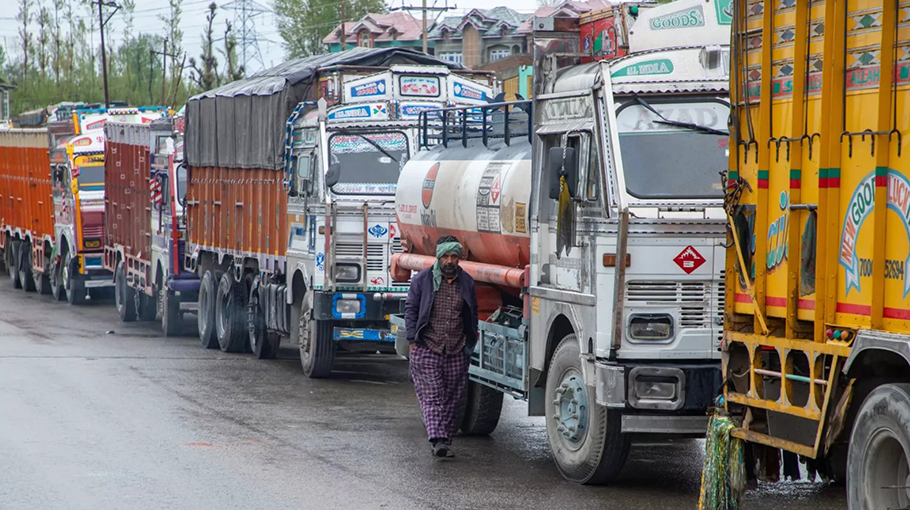Trilateral highway is the road to regional economic connectivity

India’s objective of transforming its landlocked Northeast into a connectivity hub with South and Southeast Asia is central to its ‘Act East‘ policy. Establishing mega connectivity projects and economic corridors is crucial for enhancing trade, fostering cultural exchanges, contributing to regional stability and strengthening India’s strategic and geoeconomic influence in Southeast Asia.
The India–Myanmar–Thailand Trilateral Highway (IMT-TH), spanning approximately 1360 kilometres, aims to establish a seamless road link between India, Bangladesh, Myanmar and Thailand. The route begins in Moreh, India, passes through Tamu and Mandalay in Myanmar and ends in Mae Sot, Thailand. This connectivity project promises substantial economic benefits by streamlining trade routes and fostering foreign investment.
In 2022–23, India’s exports to ASEAN rose to US$44 billion from US$42.32 billion in 2021–22. But imports surged more significantly, reaching US$87.57 billion in 2022–23 compared to US$68 billion the previous year. The IMT-TH aims to connect India’s Northeast with Thailand via Myanmar, facilitating trade, education, tourism and health links between the three nations by providing a more efficient and cost-effective transportation route.
Including Bangladesh in the highway project transforms it into a comprehensive regional network, enhancing economic prospects by creating a corridor linking South Asia with Southeast Asia. This integration promises to significantly reduce transportation costs and time, open access to markets in Nepal, Bhutan and other regions and further integrate the Bay of Bengal Initiative for Multi-Sectoral Technical and Economic Cooperation (BIMSTEC) economies.
The strategic significance of the IMT-TH project extends beyond connectivity. It embodies India’s vision of deeper regional integration and of positioning itself as a critical player in Southeast Asian geopolitics.
But the project has faced significant delays and challenges since its conception in 2002. Initially targeted to be operational by 2015, the deadline was extended to 2019, and now the new deadline is set for 2027. These delays are primarily due to political instability in Myanmar, financial issues and other regional impediments. Challenges in Bangladesh include political instability and competition with Chinese infrastructure projects, which could complicate regional cooperation and project implementation.
The 2021 military coup in Myanmar and the rise of the junta government have further paralysed the project, intensifying the pre-existing instability. The military’s grip on power has resulted in heightened violence and pervasive unrest, severely compromising the safety of construction workers and travellers. The conflict between the military junta and resistance groups, such as the National Unity Government and various ethnic armed organisations, has fostered a volatile atmosphere, significantly disrupting project timelines and escalating risks.
Ensuring the safety of the highway and its users requires addressing these security challenges and engaging with local communities to garner their support for the project. But ethnic conflict in Myanmar and India’s Northeast also pose significant hurdles. The areas along the highway are home to numerous ethnic groups with longstanding disputes, complicating the highway’s construction and maintenance. Considerable security issues persist in Myanmar’s Chin State and Sagaing Region, where conflict between the junta and ethnic armed groups continues.
Recent communal conflicts, such as those between the Kuki and Meitei communities in Manipur, have further strained the project’s progress. Persisting bottlenecks include replacing 69 bridges along the Tamu-Kyigone-Kalewa road, which has been delayed since 2015 due to contractor agreement issues. Construction is underway on the Yar Gyi road section, where workers must navigate steep gradients and sharp curves. Only about 25 per cent of this section is complete, and converting a 121.8 kilometre portion into a four-lane motorway will require more time than planned.
India and Myanmar could benefit from increased diplomatic engagement to address security concerns and ensure all stakeholders’ safety. Collaborative efforts in capacity building and infrastructure development could help ensure smoother project implementation.
Another significant concern is formulating and implementing the India–Myanmar–Thailand Trilateral Motor Vehicle Agreement (IMT-TMVA), which faces substantial challenges. These challenges stem from inadequate infrastructure, bureaucratic hurdles and security concerns.
Inadequate road networks, especially in Myanmar, hinder smooth vehicular movement. Bureaucratic complexities across the three countries, including obtaining the necessary permits and clearances, create significant delays. Security concerns, particularly in conflict-prone areas of Myanmar, pose risks to the safe movement of vehicles and goods. Despite challenges, the strategic benefits of the India–Bangladesh–Myanmar Trilateral Highway make it essential for regional integration. Aligning with India’s Act East policy, the highway will enhance engagement with Southeast Asia and foster collaboration by contributing to various other initiatives, including the Asian Highway Network and the BIMSTEC Transport Master Plan.
The highway will be supported by maritime connectivity efforts including strengthening direct port-to-port links, with memorandums of understanding already signed between Ranong Port in Thailand and Indian ports in Visakhapatnam, Chennai and Kolkata.
As the highway nears completion, it is set to become a vital artery for bridging geographical divides and addressing local community needs, enhancing India’s strategic footprint in Southeast Asia.
Soumya Bhowmick is Associate Fellow at the Centre for New Economic Diplomacy, Observer Research Foundation.
Source: East Asia Forum




